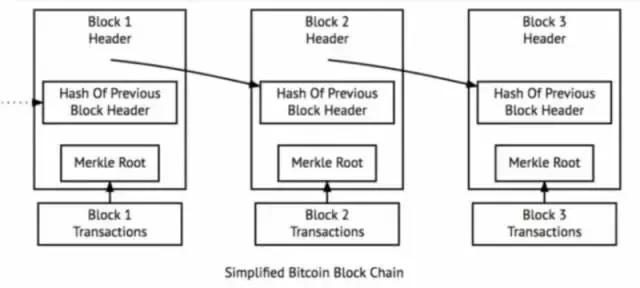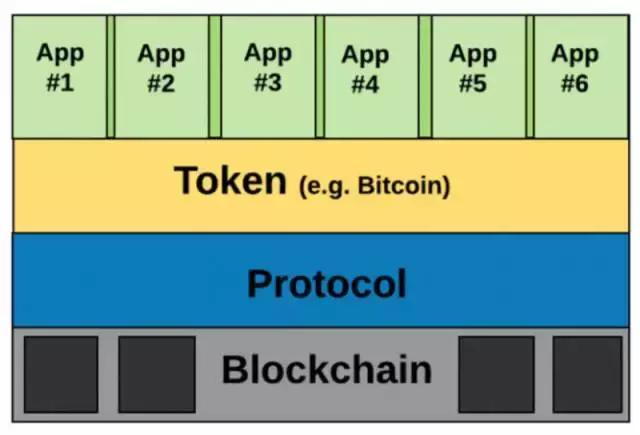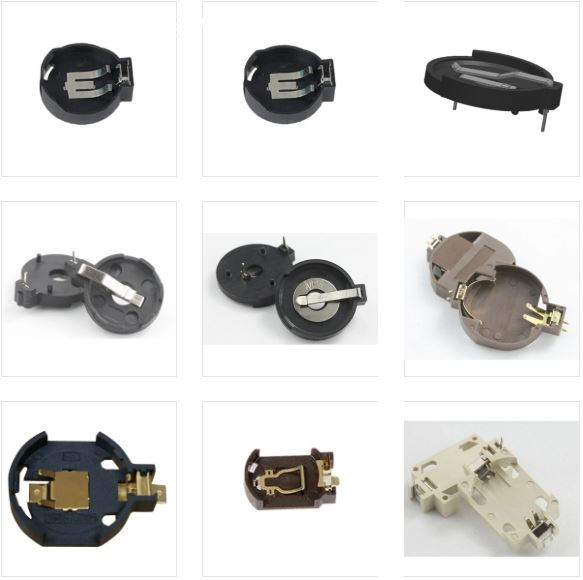Bitcoin futures officially entered the historical arena, which strengthened liquidity and brought greater regulatory pressure. Although the market is still worried about the bursting of the bitcoin bubble, the blockchain technology behind Bitcoin has been widely recognized by the market and investors. So, do you really understand cryptocurrencies? What is the definition of blockchain? What is the process of token generation? Sea Whale Finance has specially prepared a cryptocurrency-related dictionary for you, covering the basic background, interpretation and use of cryptocurrency-related vocabulary from blockchain to “qiâ€. Let you keep up with the blockchain trend for the first time, not OUT!

Related terms: data blockchain, blockchain technology
Background: Blockchain technology began with the founder of Bitcoin, Nakamoto Satoshi. In 2008, he proposed the concept of blockchain in Bitcoin White Paper and created the Bitcoin social network in 2009. The first block, the "Creation Block". Since then, various kinds of BTC-like digital currencies have appeared, all based on public blockchains. The development of the blockchain can be analogous to the development of the Internet. One day, something like the finance-internet will be formed on the internet. This thing is based on the blockchain. Its precursor is bitcoin. The traditional finance starts from the private chain/coalition chain. (Local Area Network), the bitcoin series starts from the public chain (wide area network) and converges on the same concept – the intelligent financial world based on Digital Asset.

Figure: Simplified Bitcoin Blockchain
Explanation: Blockchain is an intelligent peer-to-peer network that uses distributed databases to identify, propagate, and record information. A blockchain is a distributed public database that permanently stores records of digital transactions. The consensus mechanism is a mathematical algorithm for realizing trust and acquiring rights between different nodes in the blockchain system. The blockchain itself is a string of data blocks generated by cryptography. Each block contains information about a bitcoin network transaction, which is used to verify the validity of its information (anti-counterfeiting) and generate the next one. Block.
Application: Blockchain is a technical solution for collectively maintaining a reliable database through decentralization and de-trust. The shared value of the blockchain is first emulated by many cryptocurrencies, and in the future it will revolutionize technology, Internet finance, and even human life. Blockchain can be applied to these areas: smart contracts, securities trading, e-commerce, internet of things, social communications, file storage, proof of existence, authentication, equity crowdfunding.
Cryptocurrency cryptocurrencyRelated words: password currency
Background: David Chaum first proposed an untrackable cryptographic online payment system in 1982. In 1990, Chaum extended his ideas to the original cryptographic anonymous cash system. This system is what is called E-Cash later. In 1998, Wei Dai published an article describing an anonymous, distributed electronic cash system, which he named "b-money." In the same period, Nick Szabo invented "Bit gold." In 2008, Nakamoto described the electronic cash system of Bitcoin. On January 3, 2009, the Bitcoin network was born, and Bitcoin became the first cryptocurrency.
Explanation: Encrypted currency is a trading medium that uses cryptography to ensure transaction security and control the creation of trading units. A cryptocurrency is a type of digital currency (or virtual currency). The cryptocurrency is issued without relying on legal tenders and is not subject to central bank control. It is based on a set of equations open source code for computer operations around the world, generated by computer graphics and cpu, and uses cryptographic design to ensure the security of all aspects of currency circulation. The cryptography-based design allows cryptocurrencies to be transferred or paid only by the real owner. Among them, the decentralized nature is derived from the blockchain technology using distributed ledgers.
Application: The biggest difference between cryptocurrency and other non-cryptocurrencies is that their total number is limited and they are extremely scarce. Because the total amount of open source code for this set of equations is limited, if you want to obtain it, you must obtain it through the CPU of the computer graphics card. Because the total amount of cryptocurrency is limited and scarce, the more mining, the higher the appreciation of the currency. For this reason, cryptocurrencies can protect data and user security. Currency including Bitcoin, Ethereum, Ripple, and Dogecoin are all cryptocurrencies.

Figure: Technology stack for cryptocurrency
Token tokenBackground and explanation: Generally speaking, a token is an item that has a shape and size similar to a currency but has a limited range of use and is not effective. Tokens usually need to be exchanged for money and used in shops, playgrounds, mass transit and other places. In the use of cryptocurrency, the term “cryptocurrency token†or “token†refers to tokens such as bitcoin, which are built on top of the blockchain and represent you and are transferable. Digital assets for others.
Antenk battery holders are manufactured from UL rated 94V-O materials. Contacts made of high quality spring steel to assure reliable connections and allow contact resistance. Each contact is clearly marked with its polarity to assure proper battery insertion.
Lightweight and rugged, these PCB coin cell holders offer uniquely designed notched battery slot that assures quick and easy insertion and replacement of all major battery manufacturers' lithium coin cells.
Coin Cell Battery Holders

We have created a wide variety of coin cell battery holders for use in all types of devices, and from handheld medical devices to server motherboards we have solutions for any application. The ever increasing types, sizes, and sheer number of devices which use coin cell battery holders have been keeping us busy, and we have a similarly increasing selection of coin cell battery holder designs. After all, the perfect coin cell battery holder for a handheld medical device is going to be vastly different from the one for a server motherboard.
Lithium Coin/button Cell-Holders Battery Holders
Compact and vertical holders allow battery insertion and replacement from the top, making them ideal for high-density packaging
compact and vertical holders allow battery insertion and replacement from the top, making them ideal for high-density packaging, which maximizes board placement choices. The through-hole mount (THM) versions feature an "air-flow" support-leg design that facilitates soldering and quick battery insertion. The surface-mount (SMT) versions feature a "flow-hole" solder tail design for increased solder joint strength and are available on tape-and-reel.
These holders are manufactured from UL rated 94 V-0 materials. Contacts are made of high-quality spring steel to assure reliable connections and allow contact resistance. Each contact is clearly marked with its polarity to assure proper battery insertion.
Lightweight and rugged, these PCB coin cell holders offer a uniquely designed notched battery slot that assures quick and easy insertion and replacement of all major battery manufacturers' lithium coin cells.
Features and Benefits of Coin/button Cell-Holders Battery Holders
Low profile for high-density packaging
Reliable spring-tension contacts assure low-contact resistance
Retains battery securely to withstand shock and vibration
Rugged construction, light weight
Unique notched battery slot assures quick and easy battery insertion and replacement
Compatible with vacuum and mechanical pick and place systems
Base material UL rated 94 V-0. Impervious to most industrial solvents
THM "air-flow" design pattern enhances air circulation around battery
SMT "flow-hole" solder tail design for increased solder joint strength
Clearly marked polarities to help guard against improper insertion
Unique Coin Cell Battery Holders
Antenk has pioneered a large number of new styles of coin cell battery holders to suit the various needs of the electronics industry. Our Verticals are an excellent way to save space on a crowded board, while our Minis can save almost 3 mm in height above the PCB over traditional coin cell battery holders. Gliders are an excellent upgrade over coin cell retainers, offering more reliable connections while also having simple, tool-less battery replacements. Our newest technology is Snap Dragon, which adds a snapping cover to the traditional style of coin cell battery holders for increased reliability.
Coin Cell Battery Holders by Size of Cell
191 | 335 | A76 | CR1025 | CR1216 | CR1220 | CR1225 | CR1620 | CR1632 | CR2016 | CR2025 | CR2032 | CR2320 | CR2325 | CR2330 | CR2335 | CR2354 | CR2420 | CR2430 | CR2450 | CR2477 | CR3032 | Coin Cell | F3 iButton | F5 iButton | LR1120 | LR44 | ML414 | SR512SW | SR60 | V80H or CP1654 | iButton | BR1025 | BR1216 | BR1220 | BR1225 | BR1620 | BR1632 | BR2016 | BR2025 | BR2032 | BR2320 | BR2325 | BR2330 | BR2335 | BR2420 | BR2430 | BR2450 | BR2477 | BR3032 | Other Sizes
Coin/button Cell-Holders,Coin Cell Holder,Button Cell Holders,Lithium Button Cell Battery Holder,Lithium Coin Cell Battery Holder
ShenZhen Antenk Electronics Co,Ltd , https://www.antenkwire.com